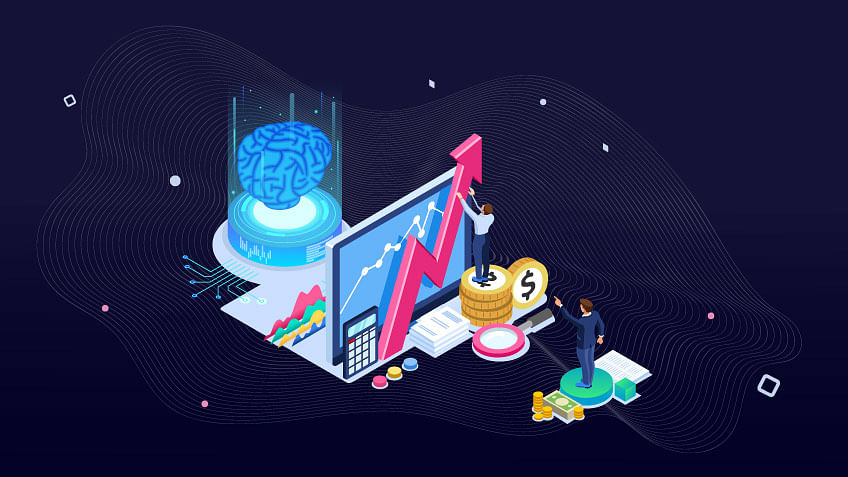Technological advancements have changed the way we perform a lot of tasks. Today, we have powerful devices that have made our work quite easier. A smart speaker, for example, takes your voice command and answers your queries. So, you may not be keeping track of the emerging technologies, but you definitely can witness some of its fascinating applications that are commercially available.
When you try to dive deep into these technological trends, you will come across terms like machine learning, data science, artificial intelligence (AI), and big data analytics. All the above terms are somehow related to data but for a layman, these are often difficult to comprehend. Professionals who have gained expertise in any of these fields are paving their way to a rewarding career ahead. In this digital age, companies are trying to make more data-driven decisions and need employees skilled in these promising technologies to achieve their business goals. Following this trend, the demand for training programs, like data analytics training, has increased so as to gain the required expertise and land a high-paying job.
This article specifically deals with two of the above terms – data analytics and machine learning. You’ll know what the terms actually refer to and how they are different from each other.
What is Data Analytics?
Today, companies are dealing with big data – the kind of data that is quite huge in volume, and traditional ways of database management cannot handle it. So, data analytics is a process that refers to the analysis and categorization of huge data sets by using specialized software, statistical techniques, and analytics tools. In this process, the data is sorted, stored, and cleansed to identify trends and interpret meaningful insights. The data that is collected from various sources is raw and maybe in the form of text, audio, image, video, and so on.
Using data analytics, companies gain major benefits like managing risks, faster and better decision making, reducing costs, promoting innovation, and giving customers a better experience. The field comes under the purview of data science, and the distinct feature of data analytics is that it helps in finding answers from the existing sets of data (for the questions that we know already).
What is Machine Learning?
You must have heard about artificial intelligence which broadly refers to enabling machines to mimic the human brain and perform certain actions. Machine learning is an important subset of AI which focuses on creating various algorithms and computer programs to give machines the ability to ‘learn’ like humans and improve through experiences without any human involvement.
The machines here learn when a lot of data is fed into them, trained through programs and algorithms, and comparing the output with what is desired. Through various iterations of this process and taking feedback, machines finally improve and then are tested with unknown data to check if they are providing accurate outputs. After the learning, the machines can be used to make future estimates and predictions. Most of the high-end applications that you listen about today like spam filtering, facial recognition, speech to text conversion, and product recommendations based on past searches are all powered by machine learning.
Data Analytics vs. Machine Learning
At a high level, both data analytics and machine learning involve gathering massive data and generating valuable insights that enhance the decision-making process of the organization. Both of them come under the umbrella of data science, require similar skills to perform the associated tasks, and achieve similar benefits. However, there are some notable differences, especially when we focus on their applications.
In big data analytics, the main focus is on identifying various data sources, data filtering, extraction, aggregation, and finally analysis for uncovering useful trends. On the other hand, machine learning focuses on teaching the machines how to respond to unknown test data and produce desired results.
Traditional data analytics is used widely for static data models and activities that do not include expert tasks. But if we are dealing with unstructured data that is fast-changing or activities that require computational power beyond human expertise, then machine learning fits better. In other words, data analytics work on existing data, and the relationship between variables is established through expert opinion. Machine learning begins with the desired variables and then looks for predictor variables automatically.
Trends are found in data analytics by following classification and analysis while the same task is performed in machine learning through different algorithms and statistics. In addition to finding trends, machine learning improves its estimation by learning from the collected data. Both data analytics and machine learning can go hand-in-hand when the cleansed and transformed data obtained through data analytics is fed to machine learning algorithms for further analysis and predicting future events.
Talking about career prospects, both data analytics and machine learning have strong demand and are poised to stay relevant in the future. While a professional embarking on a data analytics career has choices like market research analyst, Hadoop developer, business analyst, data engineer, and operations analyst, those trying to enter the world of machine learning have options like machine learning engineer, AI engineer, data architect, cloud architect, and so on. On the salary front, one can earn lucrative salaries in both domains, however, machine learning is somewhat ahead of data analytics currently.
So, make a wise choice if you are serious about a career in any of the two fields. Look at the skills required for each and decide based on your career interests. A promising career awaits you regardless of which area you select.
This article has been published from the source link without modifications to the text. Only the headline has been changed.




